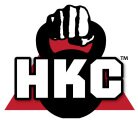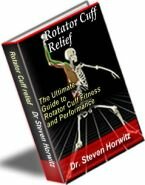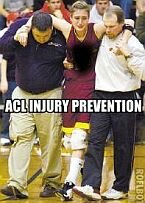Ilio-tibial Band Syndrome (ITBS)
ITBS is a common cause of knee pain in runners, bicyclists, martial artists and dancers. It is characterized by sharp or burning pain on the outside (lateral) side of the knee, thigh or buttocks.
What is the ITB and what does it do?
The ITB is a wide, flat ligament like structure that runs down the side of the thigh from the side of the hip (iliac crest) to the patella (knee cap), tibia (shin bone) and biceps femoris tendon (part of the hamstrings). It provides stability to the outside of the knee and helps control inward motion of the thigh.
The function of the ITB is to slow down or decelerate adduction (movement toward the midline of the body) of the thigh during walking or running. In other words, the ITB stabilizes the thigh and prevents unnecessary side-to-side motion. "This adduction occurs about 90 times per minute per leg as you run and almost 22,000 times during a four-hour marathon! No wonder the ITB sometimes complains!" (1)
What causes ITBS?
It was believed that the IT band would rub against the lateral condyle of the femur (outside edge of the thigh bone) or a bursa (fluid filled sac) and cause pain. Newer research has shown that this is not the case. Most individuals do not actually have a bursa at this location. There is a highly vascular fat pad that is located beneath the IT band at this location. When the knee is flexed (bent) the tibia rotates internally (inward) if there is no compensating external rotation of the femur (hip bone) the IT band increases compressive forces on the lateral aspect of the knee. The increased compressive forces prevent blood flow from passing through the above mentioned fat pad. With the decreased blood flow inflammation occurs within the fat pad causing pain. The pain is usually at its highest intensity when the knee is flexed at 30 degrees.
General causes
- Leg length differences
- Foot structure: excessive pronation (flat feet)
- Excessive shoe breakdown (particularly it the outside of the heel) and poor shoe fit.
- Training intensity errors - increasing mileage or intensity too fast
- Muscle imbalances - quads versus hamstrings, hip abductor weakness- specifically the gluteus medius.
- Run/gait style factors - e.g. bow-leggedness, knock knees, etc
Bicycling (2)
- Poor cleat position cause ITBS when cleats are excessively rotated internally.
- Incorrect saddle height: the saddle height should be set so that your legs are almost fully extended (about a 15 degree angle at the knee) at the bottom of each pedal stroke.
- Saddle positioned too far back causes a tightening of the ITB.
- High gearing ratios and excessive hill work cause overstraining of the ITB.
Running (2)
- Running on slanted surfaces (runners who run with the traffic tend to have ITB troubles in their right thigh because that leg must travel a greater distance each time it hits the ground) or run track (the counterclockwise running causes ITBS in the left thigh because the ITB must control a greater deceleration of adduction in the left hip.
- Too much downhill running.
How to tell if you have ITBS
The key aspect of ITBS is lateral knee pain. Runners often note that they start out running pain free but develop symptoms after a reproducible time or distance. Early on, symptoms subside shortly after a run, but return with the next run. If ITBS progresses, pain can persist even during walking, particularly when the patient walks up and down stairs. "If you have ITBS, a unique examination called the Noble compression test will often cause pain. As you lie on your back, your doctor will place his or her thumb over the lateral epicondyle of your troubled leg (the lateral epicondyle is the hard knob on the bottom, outside part of your thigh bone). With the thumb on your epicondyle, you will actively flex (bend) and extend your knee. If maximal pain occurs at about 30 degrees of knee flexion, you probably have ITBS."(1)
"The differential diagnosis for lateral knee pain includes primary myofascial pain, patellofemoral stress syndrome, early degenerative joint disease, lateral meniscal pathology, superior tibiofibular joint sprain, popliteal or biceps femoris tendinitis, common peroneal nerve injury, and referred pain from the lumbar spine. In most patients, these conditions can easily be ruled out with a careful history and physical examination." (3)
Treatment
Initially, any inflammation of the ITB must be arrested. This can be done with over-the-counter (OTC) anti-infammatories, but I certainly prefer more natural remedies like bromelain and arnica (see my article Nutrients for Healing for more suggestions). Ice also is important; ice the ITB at least twice per day for 15 minutes. Once the inflammation is addressed the cause of the ITBS must be corrected. Primary muscles used in any activity repetitively require specific attention. If not, they will slowly tighten due to an accumulation of unwanted toxins and a reduction of normal blood flow (nutrition and oxygen) to the muscle. This is why techniques like Active Release and Graston are so effective with ITBS. Both these techniques remove the scar tissue restoring the proper blood flow and oxygenation to the tissue. None of the OTC anti-inflammatories do this! If the scar tissue is not removed the problem will never really be corrected. Areas to be treated must include not only the ITB, but the TFL, gluteus medius, gluteus minimus, piriformis, vastus lateralis, biceps femoris, soleus and plantar surface of the foot.
Cutting back on the intensity and volume of training is critical. STOPPING for a bit (1-2 weeks) while getting treatment may be necessary. Do NOT train through the pain! A proper warm-up and cool down is necessary. Warming up and cooling down with the Stick is wonderful. Stretching is part of these. Gentle stretching is critical when recovering- do not overstretch! A gentle pulling should be felt when stretching. There are many ways to stretch the ITB - see the Wharton's Stretch Book and Facilitated Stretching for suggestions. Other muscles which must be stretched included the calf (gastrocnemius and soleus), hamstrings, quadriceps, hip flexors and gluteal muscles.
Correcting structural imbalances and any equipment or training errors is crucial. For example, for leg length discrepancies a heel lift may be necessary. For pronation, specific exercises are necessary to strengthen the foot and and custom orthotics may be necessary. A special evaluation for muscle imbalances and asymmetries called the Functional Movement Screen will be performed in order to determine exactly what corrective exercises will be part of your care. The gluteus medius (one of the deep buttocks muscles) is usually very weak in patients that have this syndrome. The gluteus medius is one of the external rotators of the hip and the muscle that is most active when attempting to stabilize the pelvis on one leg. When your hip is flexed to 90 degrees the gluteus medius helps externally rotate your femur (thigh bone). With a weakened gluteus medius the femur stays internally rotated. This causes the fat pad at the lateral aspect of the knee to be exposed to the increased compressive forces from the IT band. The gluteus medius can be strengthened by performing exercises on one leg. By performing these activities the majority of patients who suffer from IT band syndrome receive relief of their symptoms. A good exercise to strengthen your gluteus medius is a one leg step down. You will need a step to perform this exercise. Start with your right leg on the edge of the step and the left leg off of it. Now begin to lower yourself onto your left foot (make sure to land on your heel and not the toes). This is accomplished by sitting back and bending your right knee until the left heel touches the ground. Once you have touched the ground push back up. Do not let your right knee collapsing inward. Make sure to keep your knee over your foot. See my article See Strength Training for Runners for ideas. Keep a training diary. You will be amazed at what you discover by keeping a diary.
When attempting to return to regular activity, remember REST: Resume Exercise Below the Soreness Threshold. Gradually increase the frequency and intensity of your training. It may be helpful to think about injuries in 4 stages:
Stage 1: You are able to exercise, but you have pain afterwards. Start icing, stretching and making the aforementioned corrections. If you get to Stage 3 or 4, you need treatment.
Stage 2: You are able to exercise, but you have pain during exercise. This pain does not affect the quality or quantity of your exercise, e.g. if you run, the pain does not affect how fast or far you run. Start icing, stretching and making the aforementioned corrections. If you get to Stage 3 or 4, you need treatment.
Stage 3: You have pain during exercise and it affects your performance. e.g. If you run, the pain slows you down or causes you to shorten your distance, or both. You need treatment!
Stage 4: You are unable to exercise at all due to pain - you need treatment!
References and suggested reading:
1. Sports Injury Bulletin
2. Active Release Techniques
3. Physician and Sports Medicine
Michael Fredericson, MD; Marc Guillet, PT, ATC; Len DeBenedictis, MS, CMT Quick Solutions for Iliotibial Band Syndrome, THE PHYSICIAN AND SPORTSMEDICIN E - VOL 28 - NO. 2 - FEBRUARY 2000.
Khaund, R and Flynn, S Iliotibial Band Syndrome: A Common Source of Knee Pain American Family Physician 2005 Apr 15;71(8):1545-50
|
The Ultimate Nutritional Lie Detector Test LEARN MORE 
|
Kettlebell Rehab

Click Here
To See How Kettlebells will transform your body!
Vortex Rehab

Click Here
To See How This
Revolutionary Machine
Can Help You!
Partner / Support

Loans up to 3 months - fast cash advances for up to 90 days and up to $5,000!


















